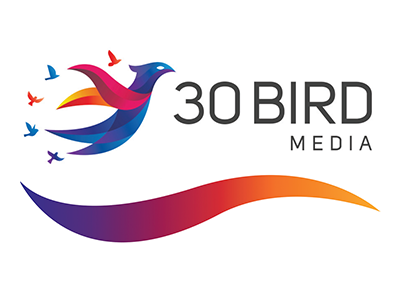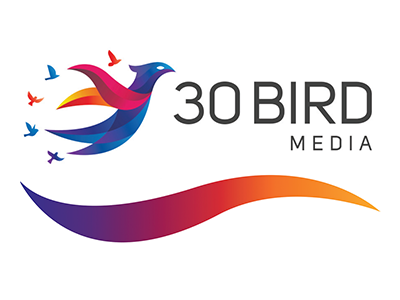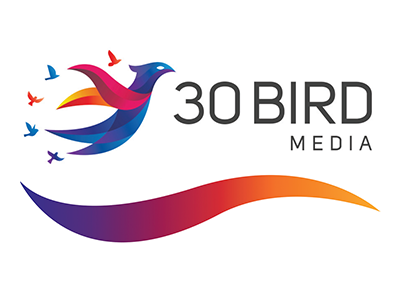 |
Stress First Aid for Long-Term Care Staff |
1.00 |
As an essential worker during a pandemic, your work stress is accompanied by the stressors in your personal life, as well as concerns about your family’s health. As staff in a long-term care facility, you also have the stress of caring for vulnerable individuals with serious medical and cognitive issues who may be reacting poorly to extended social isolation. This is unprecedented in long-term care, and it requires ongoing, effective stress management. Stress First Aid offers a flexible framework of tools for addressing stress reactions that can hopefully reduce the likelihood that these reactions will develop into more severe or long-term problems. |
 |
Searching Online |
0.75 |
This course covers the fundamentals of searching online. From using basic features, such as the homepage and address bar, to using "advanced search" to find very specific information, this course will cover it all. |
 |
Microsoft Azure Fundamentals - Exam AZ-900 |
24.00 |
Azure Fundamentals - Exam AZ-900 provides basic knowledge of cloud concepts, Azure cost management and Service Level Agreements, core Azure services, core solutions and management tools, general security and network security features, and identity, governance, privacy, and compliance features. You will find this course valuable if you are just beginning to work with cloud-based solutions and services or are new to Azure. This course maps to the Azure Fundamentals AZ-900 exam.
You will benefit most from this course if you intend to take the Azure Fundamentals AZ-900 exam. Azure Fundamentals can be used to prepare for other Azure role-based or specialty certifications, but it is not a prerequisite for any of them.
This course assumes you have basic knowledge of general technology concepts, including concepts of networking, storage, compute, application support, and application development. |
 |
The Stages of Community—How to Create Effective Group Dynamics in the Workplace |
1.00 |
We may not be uniform—in race, politics, gender, generation, etc.—but we can be unified in love and service. This is how we get there: Stage One is Psuedo-community. Relationships are a half an inch deep and fake. We pretend we all get along, but we really can’t stand each other. Stage Two is Chaos. We quit pretending that we like each other, we finally aired our differences, and now the battle has begun to change each other. Stage Three is Surrender. We’ve accepted that we are stuck with each other, and we’ve proven that we’ve only hurt each other in the process of trying to change each other. Finally, though, we’re willing to surrender our agenda (and all other barriers to our communication) so that we might understand one another. Now we have hope. Stage Four is Community. We still don’t agree on everything, but we’ve learned to treat each other with dignity and respect. Our campus is a relationally safe environment. We share a sense of belonging and purpose. This is the place where lives are impacted. Everyone wants to be on this campus. |
 |
Conducting Meetings: Communicating Nonverbally (Instructor Guide) |
0.50 |
Individuals are always sending messages, unconsciously or consciously, through nonverbal communication. When verbal and nonverbal communication contradicts one another, nonverbal cues are usually believed. Therefore, it is important that you understand what different types of nonverbal communication can mean, and how these messages can influence the productivity of your meetings.
Learning Objectives: Identify the different ways nonverbal messages can be sent. Interpret nonverbal communication and identify the steps to improve nonverbal communication.
This Instructor's Edition of this course includes notes and suggestions to assist you in presenting the material, whether in an in-person classroom setting, or as an instructor-led online or distance-learning course. It also provides you with the answers to questions found in mid-lesson activities, as well as in the quiz that concludes the course. |
 |
Understanding Autism in Your Community |
1.00 |
This course is designed to educate communities on how they can work together to be more inclusive and accepting of people with autism. It will give you an overview of the struggles people with autism face and some ways in which communities can make themselves more accessible and autism-friendly. |
 |
I Belong: Supporting Social Awareness and Interpersonal Skills |
2.00 |
We all have lived full lives with varied experiences, both positive and negative. Whether we are aware or not, our experiences, including our social, political and cultural beliefs and background, affect our practice with youth. During this course, participants will learn about how culturally grounded beliefs and background affect our practice with youth, how to help raise our awareness of those factors, and reflect on current and new strategies that support the development young people’s social-awareness and interpersonal skills. |
 |
Reducing Foodborne Illness Risk Factors in Food Service and Retail Establishments |
0.50 |
This course covers different risk factors that are insufficiently controlled in institutions, retail food, and restaurants. Recommendations to help these places control these risk factors are also given. |
 |
Slips, Trips, and Falls |
0.75 |
This course covers slips, trips, and falls in their entirety within the workplace. Being able to identify common causes of slips, trips, and falls helps to protect from a workplace injury. Once those causes are identified, you will learn how to create protection plans and use prevention tools for slip, trip, and fall incidents.
It is just one of many health and safety courses we offer. This course will help you learn about best practices to keep yourself safe and healthy when on the job. |
 |
Project Management - Advanced: Project Integration and Plan Development |
0.50 |
This course will cover how to measure data during project integration and differentiate between project and product life cycles. You will also learn how to identify the importance of developing a project plan, the elements of a project plan, the key input required for project plan development, and methods used in project plan development. |
 |
Managerial Leadership: Defining Employee Roles and Priorities |
1.50 |
A vision is created by an organization to inspire its members to work together to reach for an ideal of what the organization can become. The members of the organization should use the vision as the standard to determine the day-to-day functions of their individual roles. The vision is the guide to use every time an action is taken, a decision is made, or a plan is developed to improve the organization or the people in it. An organization’s vision should enable the members in every role to do what is in the best interest of the organization.
In this course you will learn to: determine leader roles and strengthen employee roles, and align employee priorities and evaluate employee performance. |
 |
Providing Homework Support: Types of Homework Support |
1.00 |
Research indicates there are many different ways to provide effective homework support in school-age programs. When planning a homework support program, it is important for school-age programs to develop a homework philosophy that is consistent with the program’s overall philosophy, and reflects current research on best practices for providing homework help. The homework philosophy should also reflect the needs of parents and children in the program, and strike a balance between homework needs and other experiences that help children grow and learn out-of-school. In this course, we will explore the various types of homework support. |
 |
Developing Effective Outdoor Environments and Interest Areas: Assessing Space and Planning Activities |
1.00 |
School-age children need daily opportunities to exercise, relax, and participate in a wide range of outdoor activities. The hours children spend in after school programs are often the best hours of the day for getting fresh air and enjoying the outdoors while it's still daylight. School-age programs can provide safe, secure settings where children can enjoy the outdoors. In this course, we will explore how to assess space and plan activities in outdoor environment and interest areas. |
 |
Effective Communication with Children and Youth |
2.00 |
We are constantly communicating with the children and youth in our program through our words and actions. It's important for program staff to think critically about their communication skills and habits in order to communicate effectively. During this course, participants will learn about effective and dynamic communication tools, strategies to check for understanding, and activities that engage children and youth in communication. |
 |
Connection Planning in Long-Term Care |
1.00 |
This module includes training for staff and providers in the importance of social connection and practical strategies learners can use to promote social connectedness in long-term care. The module explains how to implement Connection Planning, a brief, person-centered behavioral intervention for developing resident care plans that address social connection. Connection Planning includes evidence-informed, practical strategies to promote meaningful social connection among residents in long-term care. |
 |
SCBA Review #1951 (Instructor Guide) |
1.00 |
This is the Instructor Guide for Lesson #1951 SCBA Review. This Instructor Guide is intended to prepare a lead instructor to deliver this course curriculum. Included in this guide is a review of lesson content, instructions for conducting the lesson skill activity and all required lesson materials. The lead instructor must pass this instructor guide course with a minimum score of 80% to receive the course materials for this lesson. |
 |
E-Mail Etiquette: E-Mail Messages |
0.50 |
In this course, you will learn how to take advantage of the headers in e-mail messages. You will learn about the “To” field, in which you should type the recipient’s e-mail address. You will also learn when to send carbon copies and blind carbon copies of messages. You will learn the importance of writing a proper subject field for e-mail messages and that the header also includes the date and time of sending messages. Finally, you will learn how to construct the body of an e-mail message, add a personal touch to your messages by including a proper greeting, relay information by placing it in the appropriate order, and use different types of lists effectively. You learned the correct way to write long e-mail messages to keep recipients interested in the information and how to effectively close e-mail messages. |
 |
Correcting Performance Problems: Investigating Performance Problems |
1.00 |
Before addressing a performance problem, you should confirm the existence of the problem itself. An interview is a useful method for doing this. During the interview, you might encounter facts that you were previously unaware of and excuses that you didn’t expect. It's important to follow a definite process, and expect the unexpected during the interview.
In this course you will learn to: identify the causes for an employee’s performance problem by interviewing, and question an employee regarding attendance issues, describe the factors affecting achievement, and apply conduct investigation techniques. |
 |
CompTIA Cybersecurity Analyst+ (CySA+) CS0-003 Exam Prep |
1.00 |
Exam Prep to accompany 30 Bird's CompTIA Cybersecurity Analyst+ (CySA+) CS0-003 course. |
 |
Leading with Head and Heart |
2.00 |
Those in leadership positions have a responsibility to both lead and manage.During this course, participants will understand the differences between the leadership and management, and the steps we can take to cultivate both. Participants will explore how leaders create safe, supportive environments by modeling self-awareness, interpersonal skills and growth mindset in how we lead and manage. |
 |
Differential Diagnosis of Dementia |
1.00 |
At the end of this course, you will be able to:
Define Alzheimer's disease, and identify its risk factors.
Examine the differences between Alzheimer's disease and dementia.
Explore the pathology and the clinical presentation of Alzheimer’s disease, frontotemporal dementia and dementia with Lewy bodies.
Examine the diagnostic tests and tools used in the diagnosis of dementia. |
 |
CWNP Certified Wireless Specialist - Exam CWS-101 |
8.00 |
Certified Wireless Specialist - Exam CWS-101 covers the fundamentals Wireless Fidelity (Wi-Fi) technologies for wireless communications. The student will learn the basics of how Radio Frequencies (RF) are utilized by Wi-Fi with hardware and software to create wireless local area networks (WLANs). Upon completion of this course, the student will have the knowledge required for the CWS-101 exam and CWS certification.
This vendor neutral course assumes that the student has a basic knowledge of using wireless computing devices and wireless networks. The exam objectives are marked throughout the course, with applicable acronym and objective indexes. |
 |
Introduction to Eldercare |
2.75 |
This course will equip you with the essential knowledge to navigate the unique challenges and opportunities that come with caring for older adults. |
 |
Exploring Developmental Needs and Characteristics: Age Group 5 to 7 for Paraprofessionals |
1.00 |
Certain developmental needs and traits are associated with younger school-age children, while others are typical of older school-age children. While the differences between school-age children of different ages are not clear-cut, there are some general traits and tasks that are often associated with younger school-age children. This course delves into the specific traits of students between the ages of 5 and 7. |
 |
Lemurs |
2.00 |
In this module, you'll learn about the natural history and conservation of a fascinating group of primates: lemurs. |


























